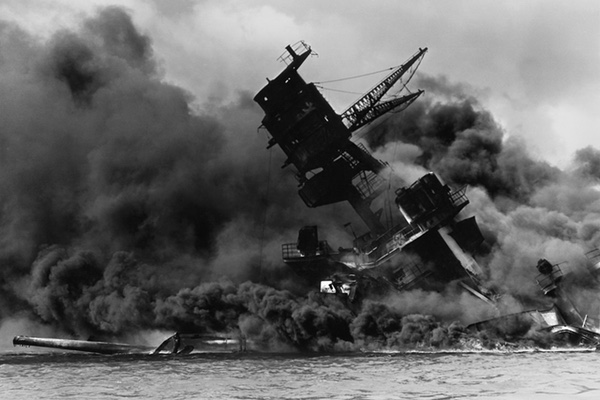A World without Strong American Leadership?

Strong American leadership has been globally important for over seven decades. With America at the helm, the West won both World War II and the Cold War. After the disintegration of the Soviet Union in 1991, American efforts were vital for the development of dozens of democracies and modernizing economies.
President Obama’s weak leadership has been costly to the world and America’s allies. In the Middle East he has promoted a deeply flawed nuclear deal with Iran and failed to combat Iranian expansionism. The region has declined into chaos with Iran making advances in Syria, Iraq, Yemen and Libya, not to speak of Lebanon. In Europe he has opposed providing military aid to help Ukraine against Russian expansionism. In Asia President Obama has done little to counter provocative Chinese moves in the South and East China Seas. All these actions have alienated America’s allies and allowed authoritarian revisionist powers to go on the offensive.
This leads to an important question: Why do the majority of Americans, who surely are not post-modernists like the President, support his moves?
This seems especially puzzling when we look at the historical record of how disastrous American neo-isolationism was for the world in the twentieth century.
Even though the United States had the world’s leading economy in 1914, President Woodrow Wilson stayed out of World War I until April 1917. Unprepared for war (209,000 soldiers at that time), American forces only became seriously engaged two months before the end of the war. Earlier American participation could have saved millions of lives among the over nine million soldiers killed and 20 million soldiers wounded in World War I.
In World War II President Roosevelt entered the war only after the United States was attacked at Pearl Harbor in December 1941. Poorly prepared American forces in November 1942 took on a handful of German divisions together with weak Vichy French and Italian divisions in Operation Torch in North Africa. It took seven months and a humiliating defeat in the first battle ever with German forces at the Kasserine Pass in February 1943 before victory was achieved in May 1943. Most of America’s early war participation involved sending helpful but not decisive Lend Lease equipment to its allies and aerial bombing of Germany. The American army became fully engaged only in June 1944 when, along with the British, it invaded Europe in Operation Overlord. Earlier American intervention could have saved millions or even tens of millions of lives from the 55 million people killed in the war and prevented the Soviet Union from dominating Eastern Europe after 1945.
Even in 1950 in the Korean War the United States reverted to semi-isolationism. With only 100,000 troops in Asia and having left South Korea in 1949, American forces were quickly routed in North Korea and pushed all the way to the Pusan pocket by poorly trained North Korean troops. It took three years of war and the death of 36,000 American soldiers before the United States could end up in a draw with weaker North Korea and China in the middle of 1953.
Why was neo-isolationism so prevalent from 1890 to 1941 and has again flourished in the United States? There are many reasons. The United States, isolated by 5,000 miles of Pacific Ocean to the west and 3,000 miles of Atlantic Ocean to the east, is far removed from the major powers in Asia and Europe.
As a country of immigrants, Americans have relatively little interest in foreign affairs. Only two percent of Americans not of Latino origins can speak a foreign language! In 2000, a poll found that Americans did not name any foreign concerns among their top ten issues. When pressed, they named as their two foreign issues: illegal immigration and drug smuggling across the border.
There have been no foreign invasions of America in over 200 years since 1814 when British forces torched the White House and Capitol and then were quickly defeated in Baltimore. Peace has reigned on the northern border since 1815 and southern border since 1850.
Most Americans rarely, if ever, visit Europe or Asia. Last year fewer than 4 percent of Americans visited Europe and fewer than 2 percent of Americans visited Asia. For most Americans, Europe, Asia and the Middle East are remote, far away places of little interest.
The United States spent 1.6 trillion dollars on the wars in Afghanistan (2001+) and Iraq (2003+) and achieved little at a cost of over 6,500 American lives. The long-term costs could easily go over four trillion dollars. Most Americans wonder if the cost was worth it.
Less than 10 percent of the American economy comes from exports (1.6 trillion dollars). If we eliminate American trade with neighboring Canada and Mexico, exports accounted for a mere seven percent of GNP.
Overall, then, Americans feel that they are tired of wars and want to turn to what they see as far more important domestic issues. These issues include almost a decade of a slow growing economy, massive income inequality, crumbling infrastructure, an aging population and minority problems. As in the early stages of the two world wars and Korean War they now see today’s expansionist countries, such as Iran, Russia and China, as remote, weak and relatively unimportant.
The American return to their old 1930s neo-isolationist “America first” ways may prove temporary or it may be lasting. Next year we will see a Presidential election which could go either way.